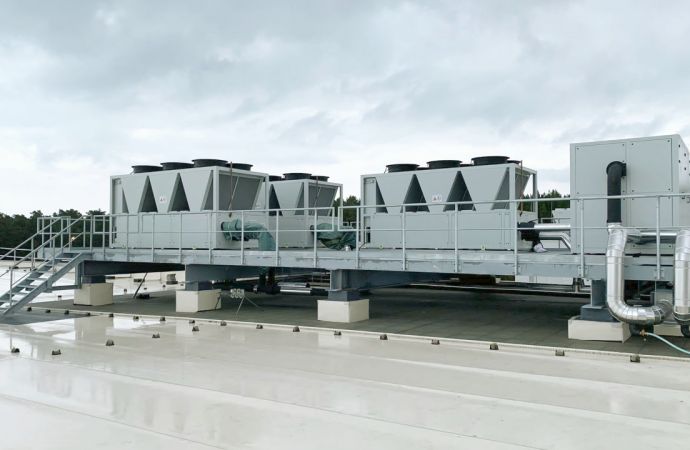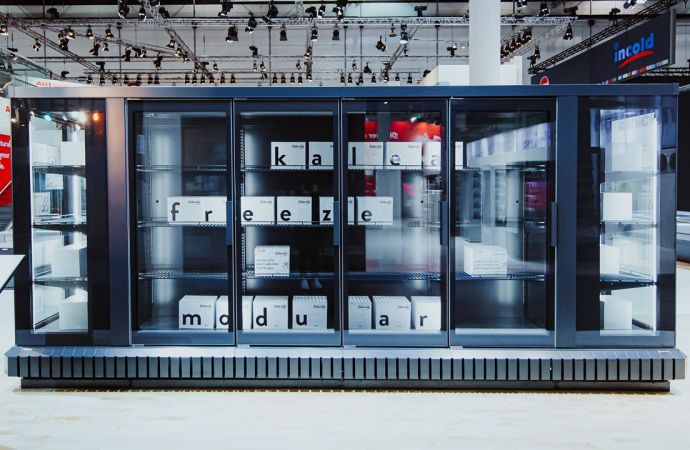The organic/natural food retailer, which has installed small-charge propane cases in many stores, is the first in the U.S. to test a centralised propane/CO2 cascade system.
_1477381156.png)
The Whole Foods store in Santa Clara, California
Propane, usually thought of as a fuel for everything from barbecues and portable stoves to engines and residential heating, is finding a growing niche as a natural refrigerant (R290) worldwide.
In North America, it has so far been largely limited to self-contained cases, which are able to derive cooling power from the hydrocarbon gas even though its charge is restricted by law to a maximum of 150g (5.3 oz.) in commercial applications.
Efforts are underway to address its charge limitation. In February, UK firm Carter Retail Equipment submitted an application to the U.S. Environmental Protection Agency to increase the maximum charge of propane in commercial refrigerated stand-alone equipment to 1 kg (35.3 oz.).
But what if propane could be used in much larger quantities than even 1 kg, like other refrigerants? Could it then serve as a viable primary refrigerant in a centralised supermarket rack system, emulating the performance it shows in stand-alone equipment? Whole Foods Market is about to find out.
Whole Foods, based in Austin, Texas, in August opened a 49,000-square-foot store in Santa Clara, Calif., that is the first in the U.S. to employ a propane/CO2 cascade refrigeration system.
The system, provided by Quebec-based Carnot Refrigeration, contains about 265 lbs. of propane, spread across seven separate chiller units on the roof, including three for low-temperature and four for medium-temperature applications. Whole Foods applied for and received permission from the EPA to test market the system in this store, and is preparing an application, in concert with Carnot, requesting approval to use propane in rack systems generally under the EPA’s Significant New Alternatives Program (SNAP) policy.
The propane at the Santa Clara store, which never leaves the roof, is used strictly to condense its refrigeration partner, CO2 (about 1,700 lbs. in total), which is piped up from a rack directly below, inside the building; the liquid CO2 is then piped down to DX evaporators in low-temperature cases, and pumped to liquid- overfeed coils in medium-temperature cases. “It’s a very clean, sharp design,” said Tristam Coffin, director of sustainability and facilities for Whole Foods’ Northern California division.
Safety measures
Though propane is safely used in a host of everyday applications in larger quantities than those allowed for refrigeration, the flammability of the gas remains a concern. Thus Whole Foods has taken special pains to ensure the safety of its cascade system, especially given its relatively large charge.
For example, the chain has set up a “very comprehensive leak detection system” that has several leak sensors on each unit as well as on other “points of possible ignition,” including a generator and two HVAC units, explained Coffin.
In addition, Whole Foods has conducted “dispersion studies” with an independent company to understand the impact of a propane leak. What it found is that, given the miniscule probability of more than one of the seven propane modules leaking at the same time, the probability of the gas combusting is equally remote. “The chance of having a leak that would hit the LEL [lower explosive limit – the least amount of a flammable substance that can ignite in a given space] has too many zeroes,” said Coffin.
Along with addressing any concerns about propane’s flammability, Whole Foods will be keen on determining the propane/CO2 system’s efficiency vs. other refrigeration options. At the self-contained level, propane has been found to be a more efficient refrigerant than HFC alternatives. Whole Foods has self-contained propane units installed in about 68 stores, including the new Santa Clara outlet.
As part of its analysis of the propane/CO2 cascade system, Whole Foods will be comparing it to other CO2 cascade systems it uses that employ an HFC or ammonia on the high side. “Our expectation is that it is going to more efficient than those systems,” Coffin said.
He also expects the propane system to be “in line with, if not more efficient than, a transcritical system without any [energy-improving] bells and whistles.”
Whole Foods is hoping that the efficiency of the propane cascade system will be similar to that of a standard DX HFC system. “But even if the energy impact is a little more, we’ll settle for that because the leak impact is going to be that much less,” Coffin said.
The chain considers Total Equivalent Warming Impact (TEWI), which combines direct greenhouse gas emissions from leaks with indirect emissions from electricity usage, “really the most important thing”.
(Note: the complete Accelerate America cover story on Whole Foods’ propane/CO2 installation can be found here).
Related stories



